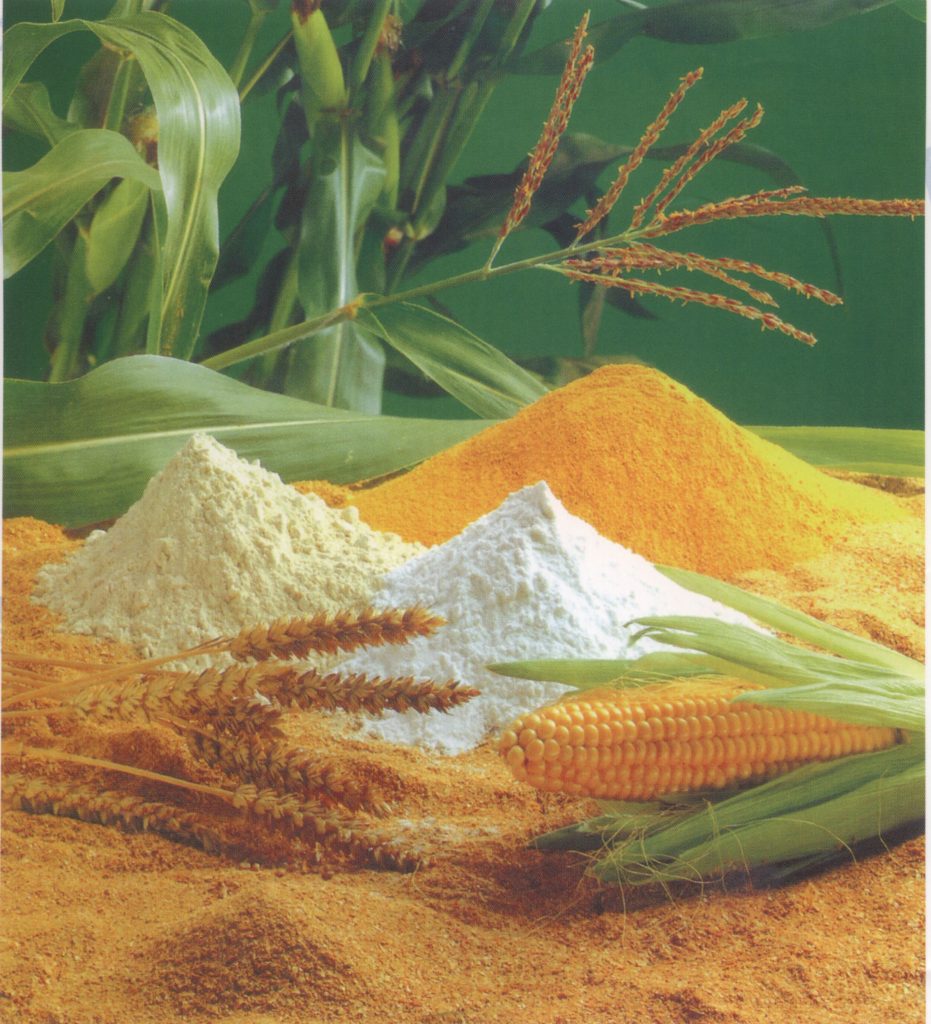R100TPD Corn Starch Processing Steps
material preparation
Corn selection: Choosing high-quality corn as raw material is the key. Generally choose corn with full grains, no mildew and few impurities. In terms of corn varieties, common dent corn and hard corn can be used to produce corn starch. The dent corn starch content is relatively high and can provide more raw materials for starch production.
corn cleaning
Corn raw materials contain various impurities, such as soil, stones, metal impurities, corn cob fragments, etc. First, larger impurities are removed through screening equipment, such as vibrating screens. The mesh size of these screens can be selected according to the size of the impurities that need to be removed.
Then use a specific gravity stone removal machine to remove impurities such as stones that have different specific gravity from the corn particles. Magnetic metal impurities can be removed using a magnetic separator to ensure the purity of corn raw materials and lay a good foundation for subsequent processing.
soak
Purpose of soaking: Soaking is to soften the corn particles so that the starch can be easily separated, and it can also dissolve some of the soluble substances in the corn, such as proteins, minerals, etc. The soaking process generally uses sulfurous acid solution. Sulfurous acid can destroy the network structure of corn protein and facilitate the release of starch.
Soaking conditions: The soaking temperature is usually around 50-55℃, and the soaking time is about 48-72 hours. The concentration of sulfurous acid in the soaking solution is maintained between 0.2 – 0.3%. The soaking process requires constant stirring to ensure that the corn particles are fully soaked and the ingredients of the soaking liquid are evenly distributed.
Coarsely chopped and separated from germ
Coarse crushing: The soaked corn is coarsely crushed through a crusher to break the corn particles into about 10 – 12 pieces. This can destroy the internal tissue structure of corn, facilitating subsequent germ separation and starch extraction.
Germ separation: Taking advantage of the fact that the germ has a lighter specific gravity than the endosperm, equipment such as a hydrocyclone or flotation tank is used to separate the germ. Germ can be used as raw material for the production of corn oil. The separated germ needs to be dried in time to prevent deterioration.
Grinding and fiber separation
Grinding: The material after germ separation enters the grinding stage. A multi-pass grinding process is adopted, generally using a sand mill first and then a pin mill to gradually grind the material into a fine slurry. The degree of grinding has a great impact on the extraction rate of starch. It is necessary to ensure that the starch granules can be fully freed from other ingredients.
Fiber separation: The ground slurry is separated into fibers through equipment such as a curved sieve or centrifugal sieve. The mesh of these sieves is very fine, allowing ingredients such as starch and protein to pass through, while leaving fiber components on the sieve. The separated fiber can be used as feed ingredients.
protein separation
The starch milk after fiber separation still contains a large amount of protein. The commonly used protein separation method is centrifugal separation, which uses the density difference between starch and protein to separate the protein from the starch milk through a high-speed centrifuge. In addition, chemical precipitation methods can also be used, such as adding an appropriate amount of flocculant to cause the protein to agglomerate and precipitate, and then remove it through filtration or centrifugation.
Starch washing and dehydration
Starch washing: The starch after protein separation still contains some impurities and needs to be washed. Generally, a multi-stage cyclone is used for starch washing. Through countercurrent washing, the starch is continuously washed with fresh water to remove residual impurities, soluble substances and a small amount of protein.
Dehydration: The washed starch needs to be dehydrated. A centrifuge can be used for dehydration to reduce the moisture content of the starch to about 35 – 40%. Vacuum filtration and other methods can also be used for dehydration to prepare for subsequent drying.
Henan Huatai supply large corn starch processing line, customized professional solution, maize starch solution, any need please email to info01@cnoilmachine.com
